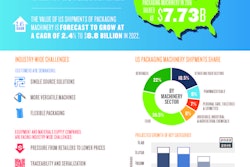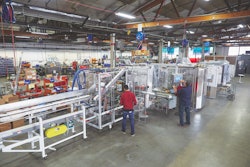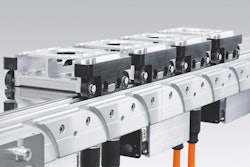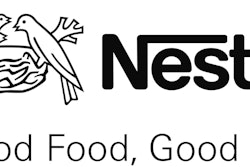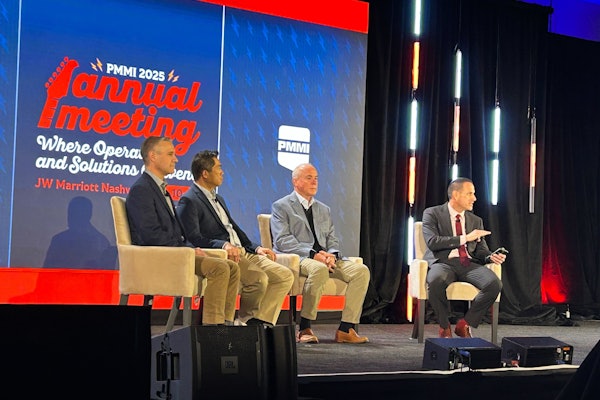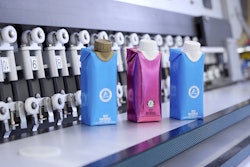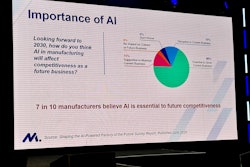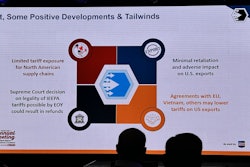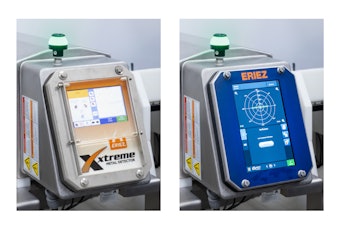By John Kowal, Contributor and co-chair of the Industrial Internet Consortium’s Smart Factory Task Group, and a past PMMI Board member.
Fourth generation, or Gen4, packaging machinery will finally deliver on the promise of mass customization, up to and including batch size one, without sacrificing efficiency. Gen4 packaging machine technology will pay off once the connectivity of the Industrial Internet of Things (IIoT) on the production floor is realized. These machines will be adaptive, meaning an order of magnitude greater flexibility. And as of this writing, Gen4 machines are already entering the marketplace.
The three previous generations of packaging machinery have been documented by OMAC, the Organization for Machine Automation and Control:
Gen1
These are mechanically driven machines, typified by a central motor powering a line shaft, connecting to jack shafts synchronizing machine functions. Gen1 machines rely heavily on manual changeovers requiring tools and change parts.
Gen2
With the introduction of servo motors to packaging machines, servos were first added to existing mechanical designs to increase the level of automation. However, because the machines remained largely mechanically driven, Gen2 increased complexity without significantly improving performance.
Gen3
By interpack 1999, a prominent European packaging machinery builder declared its new servo machines, designed from the ground up for servo automation, to be the third generation. The line shaft was gone, and thanks to recently developed multiaxis servo control technologies, all machine functions were synchronized over a digital motion network. Today’s Gen3 machines are also referred to as mechatronic designs, integrating the disciplines of mechanical, electrical, and software engineering.
The adaptive machine
Over the past two decades, Gen3 machines continued to evolve in important ways through automation technologies that enabled recipe-driven operation, restarting without rehoming, tool-less and even automated changeovers, robotic flexibility, networked safety, reduced product giveaway, serialization, and scores of other new capabilities.
Gen3 machines can be modular, yet they tend to be dedicated designs, and changeovers are still required for format changes. Mass customization—even automated rainbow packaging, let alone batch size one—have remained elusive until now. Some attributes of Gen4 do appear in certain packaging machine types, such as rotary servo labelers that adapt via recipe change to different bottle shapes, sizes and label formats, and via interchangeable aggregates to different label and adhesive types.
While the IIoT visualizes smart factories producing and packaging consumer products to order, that is not a Gen3 capability. Gen4 machines put smart factory functionalities in the realm of real-world production and packaging applications. This new generation of machinery is necessary to cost effectively meet the increasingly high expectations of consumers.
Adaptive means that changeovers become obsolete, replaced by the ability to change both product and package format with every cycle. Accumulation is replaced by synchronization via variable pitch, or the ability to balance production tasks requiring different cycle times within the machine. Reconfiguration is replaced by switching out machine modules on a highly flexible base machine.
All the monitoring, analytics, process optimization, predictive maintenance, and other tools associated with IIoT also apply, because the automation platforms needed to achieve Gen4 will have the processing power and interoperability to support IIoT.
Easier e-commerce
With practical batch size one manufacturing and packaging capability, e-commerce can skip the distribution center and ship directly from the manufacturer to consumers.
Batch size one, or manufacturing to order instead of to stock, also serves to reduce raw materials and finished goods inventory costs and the discounting/disposal of unsold inventory.
Adapting to the unknown
Switching from glass bottles to plastic, or from rigid to flexible containers, typically requires completely new filling and packaging machinery. Consumer product and package lifecycles keep shrinking, while SKUs continue to expand. It is impossible to anticipate all changes—especially disruptive ones—that are likely to occur over the 15- to 20-plus-year service life of industrial machinery.
A Gen4 machine is one that has the capacity to changeover on the fly, and moreover, to reconfigure with different production modules on the same base machine platform. It will be readily adaptable to constant size and format changes. But it will also be adaptable to radical and unforeseen requirements through corresponding equipment changes, such as replacing a carton erector module with a pouch forming module.
Track technology
The core of the Gen4 machine, track technology is really much more than a modular conveyor—this new generation of industrial transport technology doesn’t just move products to work stations, it performs work while products are in transit. And each shuttle operates independently, making batch size one a practical reality.
Track technology has been available for 15 years. It’s been refined, but the real breakthrough is in software and processing power—thanks to Moore’s Law. The impact is no less profound than the introduction of GPS technology to navigation and guidance systems.
See more on linear servo track technology here: Linear Tracks Declare Independence
Advent of Gen4 machines
At drinktec in September in Munich, Germany, a Gen4 bottle filler and a labeler were introduced.
The filler directed individual bottles from a track system to filling heads capable of filling multiple flavors, then capping and returning the bottles to the track system—producing rainbow packs in any combination desired, inline with the production process.
The labeler synchronizes three shuttles on two parallel tracks to control a bottle from the base and closure, and simultaneously impart the correct bottle rotation at the labeling head for the appropriate label size and type.
In coming months, you can anticipate these machines will be joined by others of this new breed.


